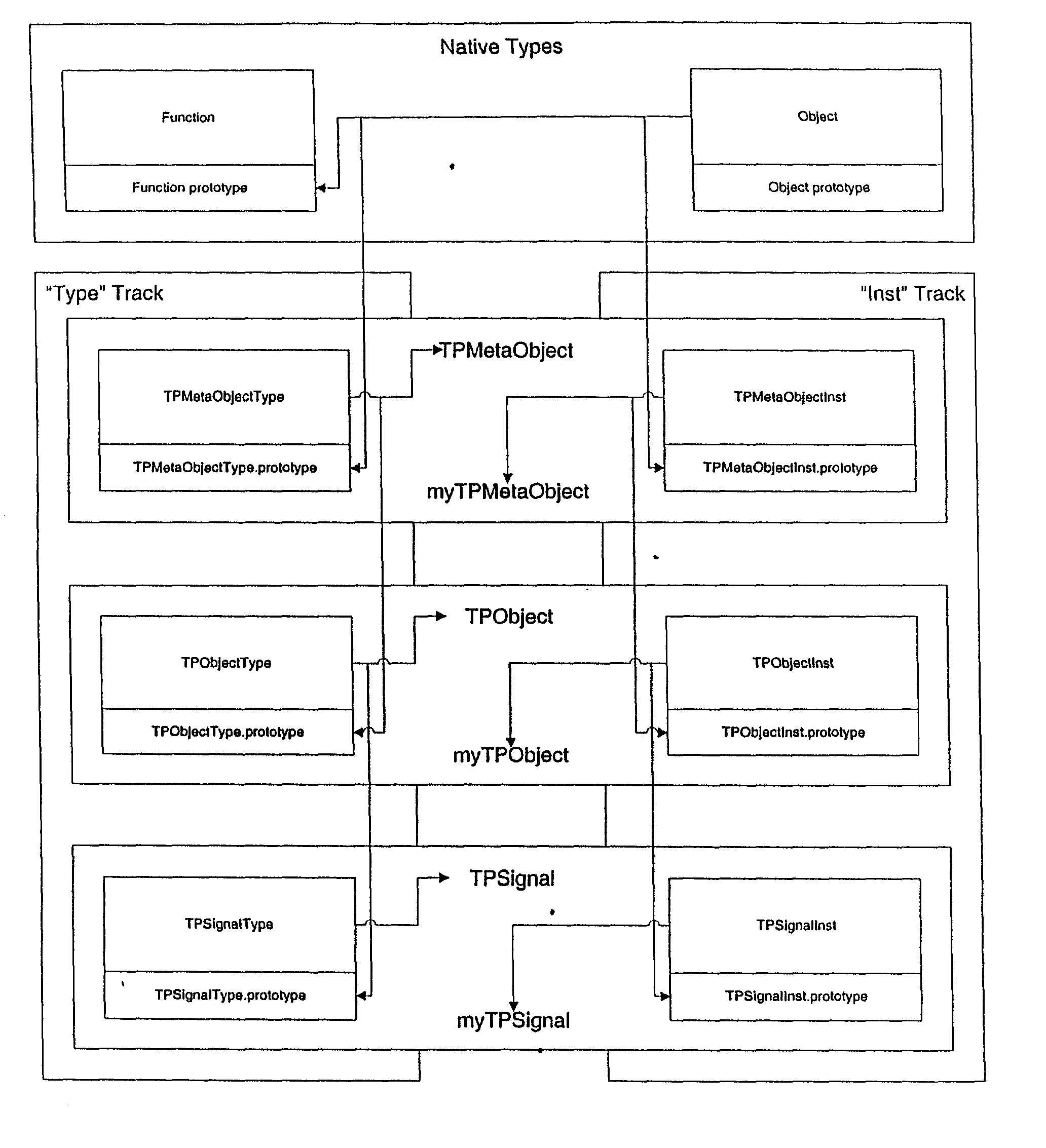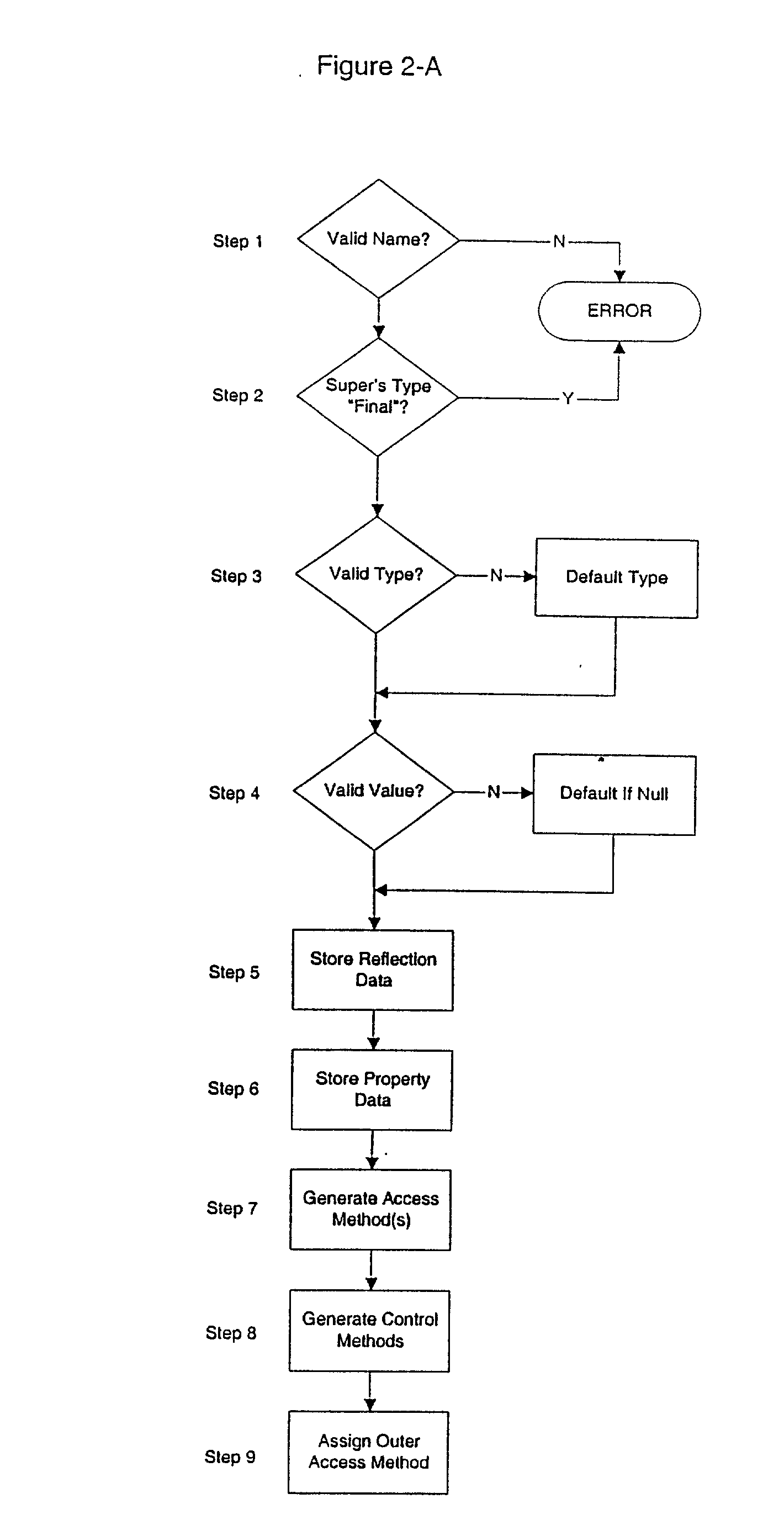ECMAScript and its derivatives have extremely limited support for these features, severely curtailing their use as application development languages.
Due to ECMAScript's prominence in
programming for the World-Wide-Web the lack of these features in ECMAScript severely limits
web development as well.
There is one major difference between ECMAScript and a pure prototype-based language however, and that difference is the source of a significant problem with respect to inheritance.
ECMAScript's types retain this capability for local modification but they do so at the expense of a clean mechanism for supporting inheritance lookups.
Unfortunately, because the new keyword and constructors are used rather than simply
cloning instances a normal prototype chain for lookups of state and behavior won't work.
Unfortunately, as closer inspection will reveal the same is not true for the types themselves.
This effectively cripples ECMAScript as an object-oriented language.
Unfortunately, ECMAScript fails to meet this fundamental guarantee as a simple example will show.
Unfortunately, since ECMAScript doesn't support type inheritance given any instance method defined for instances of type X which invokes a type method we will experience method resolution failure should that instance method be invoked on an instance of Y. Since type Y cannot inherit type state or behavior from other types including type X any method defined on X for instances of X which relies on the instance's type to perform a function will fail to locate that function when invoked from an instance of Y.
If instances of Y cannot be used interchangeably as instances of X it seems clear that ECMAScript cannot currently be used to do robust object-oriented programming since it fails to support the fundamental guarantee of object-oriented programming, namely: that instances of a type should function without failure as instances of their supertypes.
First, copy-down inheritance significantly increases memory requirements since each subtype now requires space to hold references to each
state variable and function.
Second, copy-down eliminates the dynamic lookup behavior of ECMAScript. In the case of normal ECMAScript lookups if, after subtype creation, a method or state on the supertype were changed it would be immediately visible to subtypes. When copy-down
semantics are employed it becomes necessary to propagate any change in a supertype down to any and all subtypes which don't have unique implementations. Doing this successfully requires checking each subtype to determine if it already contains a property with that name and if so whether it is unique with respect to the new method being copied down. This must be done to avoid
copying over something that has been already modified in the target instance. As it turns out making this distinction in ECMAScript because of the inherent lookup mechanisms and lack of reflection capability is extremely difficult and imposes significant performance overhead.
Third, because type instances share a common prototype (Function.prototype),
name space collisions must be handled by ensuring each property name is unique when the copy is performed. As with the rest of the copy-down scheme, this requirement adds significant overhead to the process. In essence, copy-down eliminates all of the benefits inherent in the copy-on-write approach ECMAScript naturally uses in an attempt to provide limited support for some form of type inheritance.
Given ECMAScript's type hierarchy problem it should be clear that a ECMAScript
programmer also can't get accurate type hierarchy information from the type without storing it themselves.
Unfortunately, this won't work for types themselves.
Again, a fundamental element of object-oriented programming, reflection on the nature of the inheritance hierarchy, is difficult to support in native ECMAScript.
While a few attempts have been made to improve ECMAScript's ability to support a
Java-style
system of classes and methods, none have addressed the fundamental limitations of type inheritance which are central to ECMAScript's failure to support the fundamental guarantee of object-oriented programming.
An additional problem with respect to inheritance in ECMAScript is the lack of a mechanism for invoking inherited implementations of functions properly.
This severely limits use of ECMAScript in an object-oriented fashion since it means subtypes can't override yet still invoke supertype implementations.
Unfortunately, if the implementation of print assigned to C.prototype needs to invoke the original version on A.prototype there is no mechanism in ECMAScript that will support this.
This situation is further complicated by the fact that every instance can contain its own specific print method so proper lookup of the method to invoke (or chain of methods if both B and C have overrides) becomes extremely complex.
In short, ECMAScript has no support for this fundamental object-oriented development technique.
The main
disadvantage of this approach is that it turns its back on ECMAScript's history as a prototype-based language in favor of redesigning ECMAScript into a class-based language.
Many of the dynamic features of the current language implementation will be lost.
The result is a significant alteration to the existing language which is not backward compatible with the versions currently implemented and deployed in major web browsers and products.
The effect of this behavior is that ECMAScript does not support "encapsulation" in the object-oriented sense.
Unfortunately, since all ECMAScript properties are publicly readable / writable /
executable the language does not natively support this critical object-oriented feature.
The limitations of using direct assignment for property definition are many.
First, ECMAScript's direct assignment model does not provide an opportunity to define mutability constraints.
With direct assignment it is not possible to control whether a property is "final" or "const".
Again, because of ECMAScript's lack of support for encapsulation read-only properties are not supported.
Read-only data is a common programming requirement which is unsupportable using ECMAScript's direct assignment approach.
Second, direct assignment does not provide an opportunity for defining
visibility constraints.
If the details of the implementation needs to change--even though the
public interface for the object remains constant--the program relying on these private implementation details will fail.
Third, direct assignment doesn't provide accurate information for introspection or reflection.
Using native ECMAScript it isn't possible to differentiate between instance variables whose contents coincidentally contain function references and true methods which make up the behavioral interface of the object.
Since functions in ECMAScript are themselves objects and are capable of being passed as parameters or assigned to variables the potential for
confusion regarding the actual
public interface of an object is large.
Without accurate reflection on object methods neither of these technologies would be available today.
ECMAScript's inability to accurately reflect on object behavior is a serious flaw which limits the power of programs written in the language.
Fourth, direct assignment doesn't provide an opportunity to manage data for a set of instances in a coherent fashion.
Direct assignment's failure to provide encapsulation means such group management of data outside the confines of the instances themselves is not possible.
In the case of ECMAScript this has serious performance implications.
Fifth, direct assignment doesn't provide the ability to control
method access i.e. execution.
Failure to support encapsulation means there is no mechanism for stopping inappropriate method execution.
Furthermore, by assigning methods directly to target objects a valuable opportunity is lost.
Sixth, a subtle bug can
creep into ECMAScript programs with respect to direct assignment.
The bug comes in if we modify the array rather than completely reassigning it.
In particular, any modification of an Array or Object in this fashion will not create a new copy.
Reliance on polymorphism can lead to errors in ECMAScript however.
Unfortunately, since ECMAScript is a loosely typed language there is no guarantee that a function will be found.
When a ECMAScript program incorrectly messages an object which can't respond an error occurs which often terminates
processing of the ECMAScript program.
In
Java and other strongly-typed languages it is not possible for the
programmer to invoke methods on objects which cannot respond properly to them.
When an
end user is confronted with either a program termination due to a missing method implementation or a
debugger the program has essentially crashed.
This is an inadequate solution.
No known attempts to resolve this situation have been made for ECMAScript.
Without reflection however,
Java Beans would be impossible to implement.
ECMAScript unfortunately doesn't have built-in mechanisms for performing accurate reflection.
While it is possible to iterate on an instance properties via the "for / in" construct of the language it isn't possible to determine which properties are functions and which are methods.
This implies that an object can't tell you what its actual attributes or methods are since it can't distinguish between the two.
A second complication is that ECMAScript can't properly distinguish between methods that are implemented "locally" (only on the instance itself), at the "instance" level (on the instance's constructor's prototype), or somewhere up the inheritance hierarchy.
The lack of coherent reflection severely restricts programming using Bean-like patterns in native ECMAScript.
In addition, no references could be found on implementations of meta-object systems that were not built as part of the initial construction of the language itself.
properties defined for an object can be declared to be of a certain type which can be checked by generated access methods such that assignment of a value to that property which doesn't meet the specified type constraint would result in an error.
properties can be declared final such that redefinition of the method or attributes in a subtype would cause an error
properties can be declared const such that attempting to set a new value for the property after the initial value has been assigned would result in an error
 Login to View More
Login to View More  Login to View More
Login to View More 


